In our last newsletter, we highlighted how EPBD actually offers a wealth of opportunities: our economy stands to gain in strength, consumers will have lower bills and more confort, and policymakers can usher in a new era of green prosperity for Europe.
But that’s not all. Indeed, buildings account for 36% of GHG emissions which means their decarbonisation is a central element of any net zero strategy. The latest flagship report from the International Energy Agency mapping out the path to keep the 1.5°C goal in reach recently highlighted how urgent the situation has become, but the 1.5°C goal is still possible thanks to record increases in solar PV and electric vehicles.
This is extremely relevant to EPBD debates as buildings are a prime resource to increase the share of PV as well as to enable the shift to EVs, and this is all part of the current EPBD proposal.
The majority of PV installations in the EU are mounted on rooftops. The diffuse and small-scale nature of these installations also enables a faster deployment with reduced permitting procedures compared to utility-scale installations. Further, when installed on buildings, PV electricity does not have to rely on grid availability as it can be self-consumed by the immediate users, to heat the building with heat pumps or electric space heaters. Commercial buildings, which need higher capacity but also have larger roofs for PV panels, can also self-consume PV power for their operations. Finally, PV electricity can also be self-consumed, and even stored, by charging electric vehicles.
This brings us to the second technology highlighted in the IEA report. EVs are a crucial readily-available technology to displace large quantities of fossil fuels. One of the constraints of EV deployment is the availability of charging infrastructure. EPBD can again come to the rescue as it is proposed to come with increased emphasis on the charging-readiness of buildings. The latter implies providing chargers in relevant car parks or at least ensuring that new and renovated buildings are “pre-cabled”, meaning chargers can be installed easily. Having enough charging, and especially smart charging, in buildings will allow EVs to play their role and integrate as much renewables as possible without burdening the grid.
And that’s precisely what the EPBD will do: it will turn buildings into smart clean energy hubs. Buildings will be able to generate clean electricity and re-inject it into the network when necessary (either directly from PV or from EV batteries through bi-directional charging), all the while displacing very large amounts of fossil fuels and particulate matter.
Of course, some enabling conditions should be duly considered alongside PV and charging provisions. These include electrical installations, which will become the backbone of decarbonised buildings, and a sufficiently available and fully skilled workforce, which will be needed to carry out all this installations. You can read more on electrical installations here, and go more in depth on skills needed here.
All of this brings us back to the critical nature of EPBD for our final climate target. Buildings must be equipped with PV and EV charging to ensure we are on track to limit warming to 1.5°C. And this requires our policymakers to act with reason and ambition at the next rounds of negotiation!
EuropeOn has previously campaigned to ensure EPBD has the provisions to keep in line with needed level of ambition and will now engage in online outreach specifically on its EV charging provisions with like-minded stakeholders.
